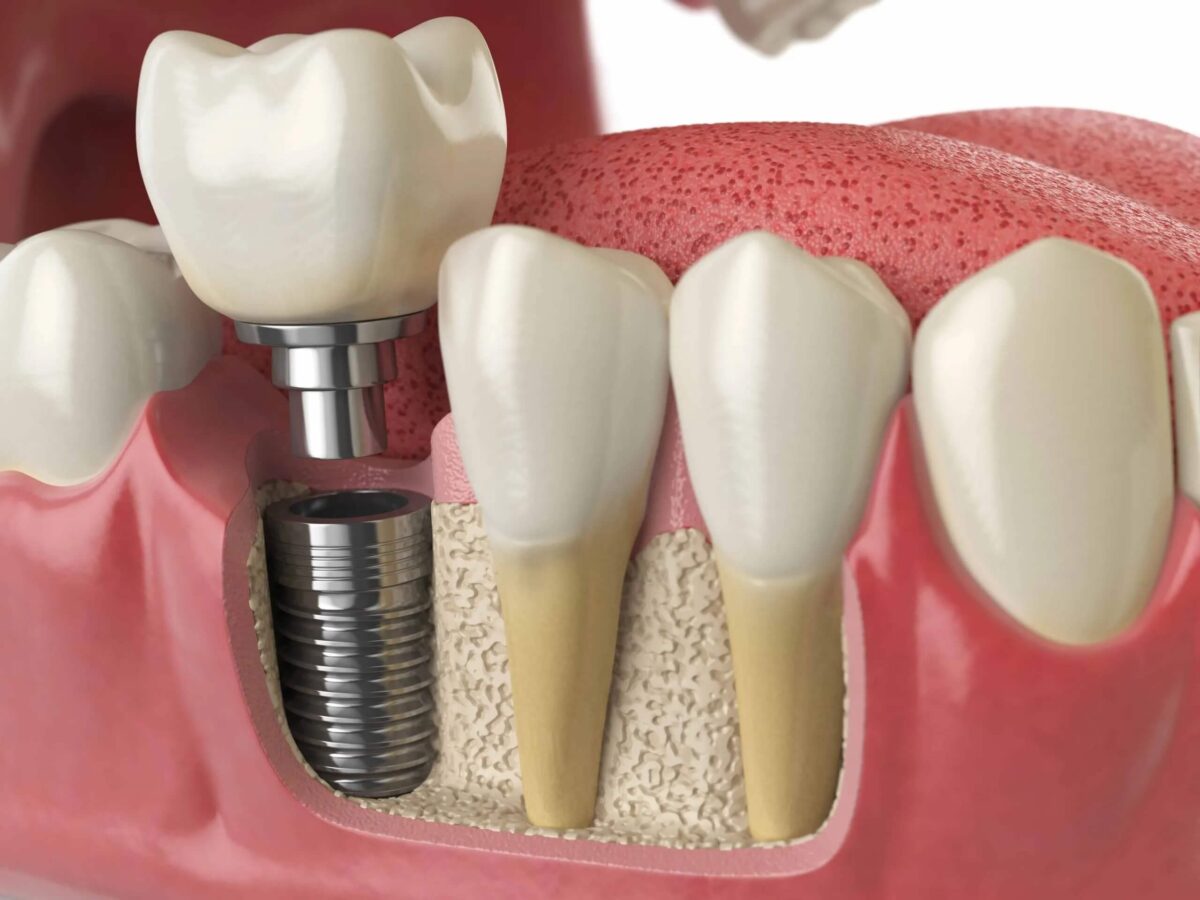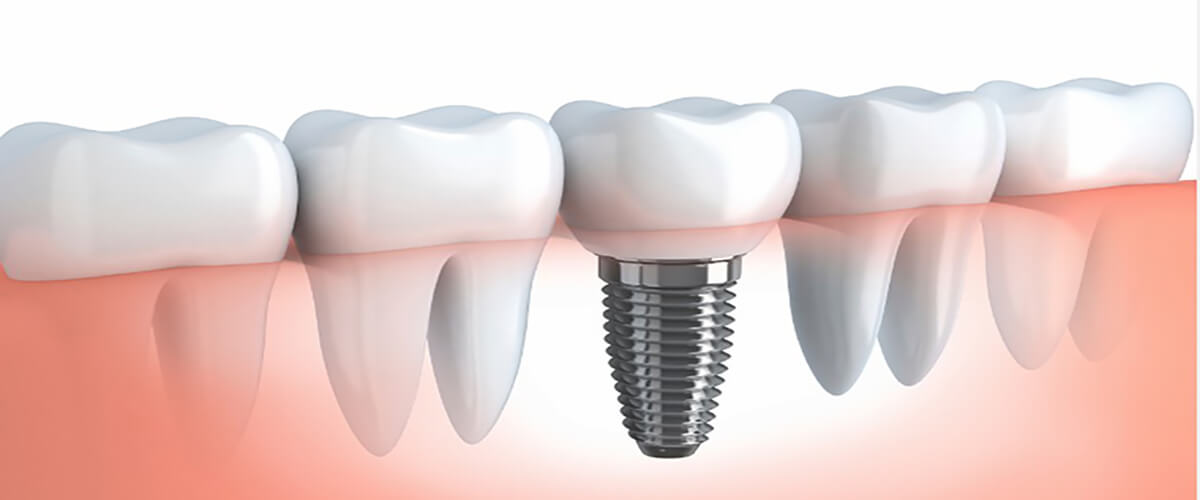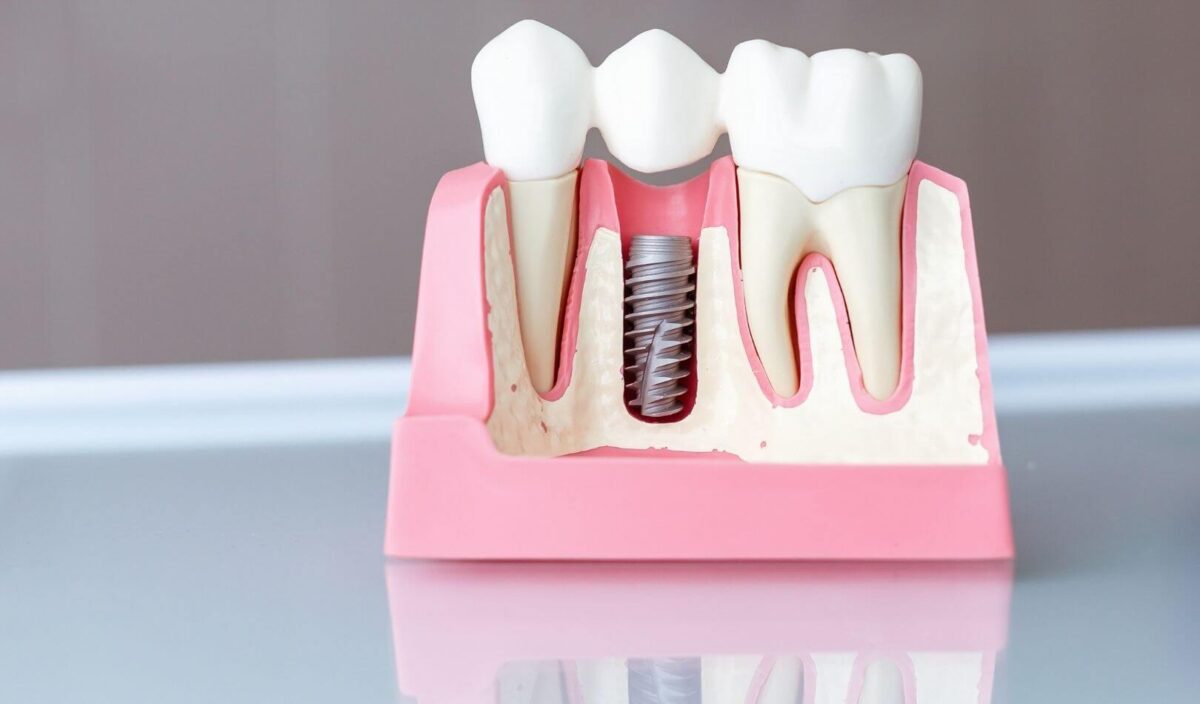Are you missing one or more teeth? Would you like to find a permanent solution to replace your teeth? If so, you’ve come to the right place! This guide will explain in detail what dental implants are and the benefits and risks of dental implants. Read on to learn more.
1. What is a dental implant?
A dental implant is a small, titanium post (screw) that is surgically placed within your jawbone beneath your gum line. This post will fuse with your jawbone, creating a stable foundation for your tooth restoration.
A dental implant post is a replacement for your missing tooth’s root. Not only does it fuse with your bone like a root, but it also stimulates and preserves your bone structure. On top of a dental implant post sits a restoration. Typically, it’s a single crown replacing one tooth. But dental implants can also support multiple missing teeth with a bridge and even secure dentures.
With proper care, dental implants can last for a lifetime. Dental implants have an open new tab on the WebMD website % success rate. For this reason, and its many benefits, dental implants are widely recognized as the #1 recommendation to replace missing teeth permanently.

2. When do I need dental implants?
When a tooth is lost due to injury or disease, a person can experience complications such as rapid bone loss, defective speech, or changes to chewing patterns that result in discomfort. Replacing a lost tooth with a dental implant can significantly improve the patient’s quality of life and health.
Dental implant systems consist of a dental implant body and dental implant abutment and may also include an abutment fixation screw. The dental implant body is surgically inserted in the jawbone in place of the tooth’s root. The dental implant abutment is usually attached to the implant body by the abutment fixation screw and extends through gums into the mouth to support the attached artificial teeth.
3. 3 different types of dental implants
So, which type of dental implant is best for you? Check out the three different types of dental implants below and discover the pros and cons of each.
1) Replacing a single tooth: Use a single dental implant
Most often, a dental implant is used to replace a single missing tooth. It requires one post and one crown. Unlike other restorations, a single-tooth dental implant replaces your entire missing tooth from root to crown.
If you have one missing tooth or multiple that are not adjacent to each other, then a single-tooth dental implant may be your best option.
However, If you have multiple missing teeth adjacent to each other, then this may not be your best option. Additionally, the next type of dental implant may save you money if you have multiple missing teeth.
2) Replacing several teeth: Use an implant-supported bridge
When you have multiple missing teeth adjacent to each other, you may find your best option is an implant-supported bridge. Typically, a bridge consists of two crowns on either side of your missing tooth gap with an artificial tooth held by those crowns in between.
Now, instead of having the crowns attach to teeth, an implant-supported bridge has crowns that connect to dental implants. The process is similar to a single-tooth dental implant. However, the teeth missing in the middle of the gap will not receive a dental implant.
The benefits of an implant-supported bridge are you can securely replace multiple missing teeth in a row – without the cost of replacing each tooth. The downside is that not all teeth will receive an implant, and therefore you will lose some bone mass.
What happens if a majority or all of your teeth are missing?

3) Replacing all your teeth: Use an implant-retain denture
If you are missing a majority or all of your teeth in an arch (upper or lower), then an implant-retained denture may be your best option. A denture is an artificial arch of teeth. It rests on your gum line and gives you the appearance of a full set of teeth.
The problem with traditional dentures is they are removable, which means they can slip, slide, click, fall out, and make daily tasks uncomfortable like eating and talking. To fix this problem, you can permanently secure your denture with dental implants.
4. Recommendations for Patients
Before choosing dental implants, talk to your dental provider about the potential benefits and risks, and whether you are a candidate for the procedure.
Things to consider:
- Your overall health is an important factor in determining whether you are a good candidate for dental implants, how long it will take to heal, and how long the implant may stay in place.
- Ask your dental provider what brand and model of dental implant system is being used and keep this information for your records.
- Smoking may affect the healing process and decrease the long-term success of the implant.
- The healing process for the implant body may take several months or longer, during which time you typically have a temporary abutment in place of the tooth.
After the dental implant procedure:
- Carefully follow the oral hygiene instructions given to you by your dental provider. Regularly cleaning the implant and surrounding teeth is very important for the long-term success of the implant.
- Schedule regular visits with your dental provider.
- If your implant feels loose or painful, tell your dental provider right away.

5. Benefits and risks
Dental implants can significantly improve the quality of life and the health of a person who needs them. However, complications may sometimes occur. Complications can occur soon after dental implant placement or much later. Some complications result in implant failure (usually defined as implant looseness or loss). Implant failure can result in the need for another surgical procedure to fix or replace the implant system.
1)Benefits of dental implant systems:
- Restores the ability to chew
- Restores cosmetic appearance
- Helps keep the jawbone from shrinking due to bone loss
- Preserves the health of the surrounding bone and gums
- Helps keep adjacent (nearby) teeth stable
- Improves quality of life
2) Risks associated with dental implant systems:
- Damage to surrounding natural teeth during implant placement
- Injury to the surrounding tissues during surgery, such as sinus perforation
- Injury during surgery (for example, fracture of the surrounding jawbone)
- Inadequate function, such as feeling like the teeth do not bite together normally
- A sensation that the tooth is loose or twisting in place resulting from an abutment screw loosening
- Implant body failure (looseness of the implant body)
- due to systemic infection, which may be more likely in patients with uncontrolled diabetes
- due to local infection in bone and gums supporting the implant body
- due to delayed healing, which may be more likely in patients who smoke
- Difficulty cleaning the gums around the implant, resulting in poor oral hygiene
- Untreated periodontal disease
- Post-surgical numbness due to nerve impingement or damage
- Always notify health care providers and imaging technicians that you have dental implants before any magnetic resonance imaging (MRI) or x-ray procedures. Dental implants can distort or interfere with these images. FDA is not aware of any adverse events reported for MRI or x-ray procedures with dental implants.

6. Ways dental implants are evaluated for safety
Dental implant systems are typically made of materials that follow international consensus standards of the International Organization for Standardization (ISO) or ASTM International. These standards have details of what makes a safe material. Most dental implant systems are made of titanium or zirconium oxide. Other materials such as gold alloys, cobalt-based alloys, titanium alloys, or ceramic materials are sometimes used. The safety profiles of these materials are well-known.
Dental implant systems are evaluated according to international consensus standards. Biocompatibility testing, to show that bodily contact with the device does not cause complications like irritation or allergic reaction, is part of the evaluation that helps ensure the materials in the dental implant system are safe and do not cause adverse effects when implanted in people.
For manufacturers to market dental implant systems in the United States, they must first show the FDA their systems are as safe and as effective as dental implant systems already on the market.
7. Conclusion
That’s all there is to know about dental implants, so if you’re thinking about replacing your teeth, read this article carefully.









Leave A Comment